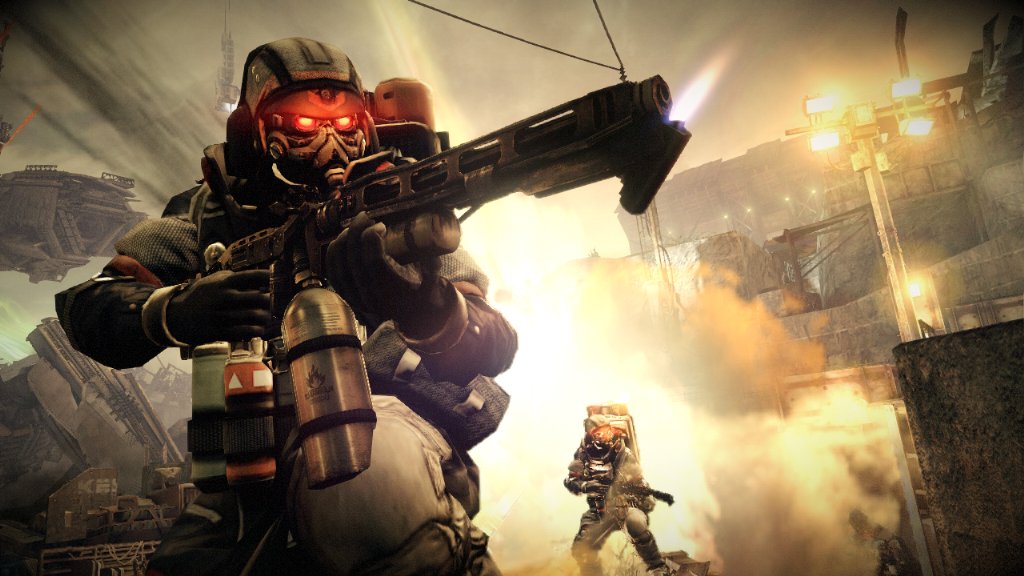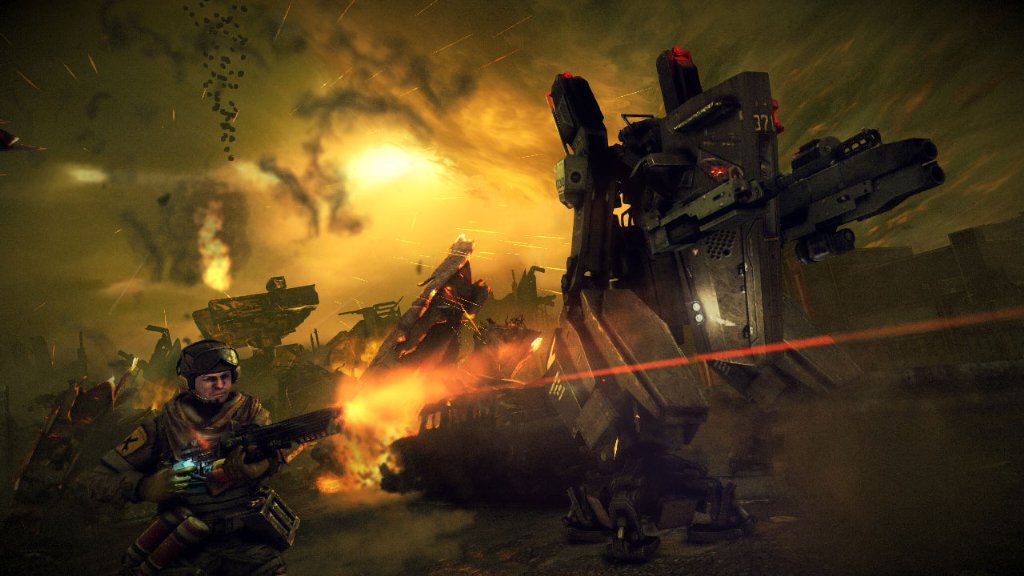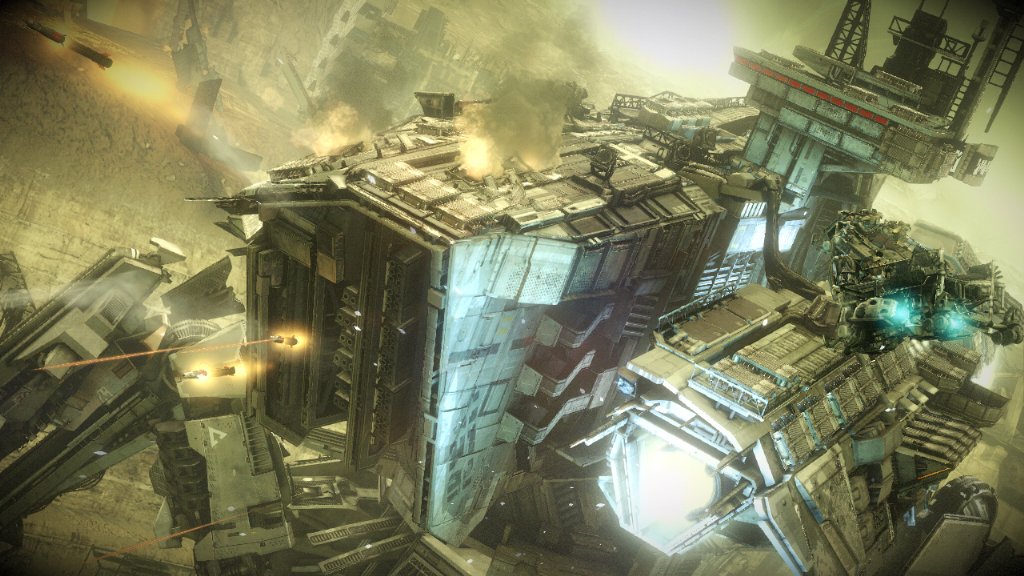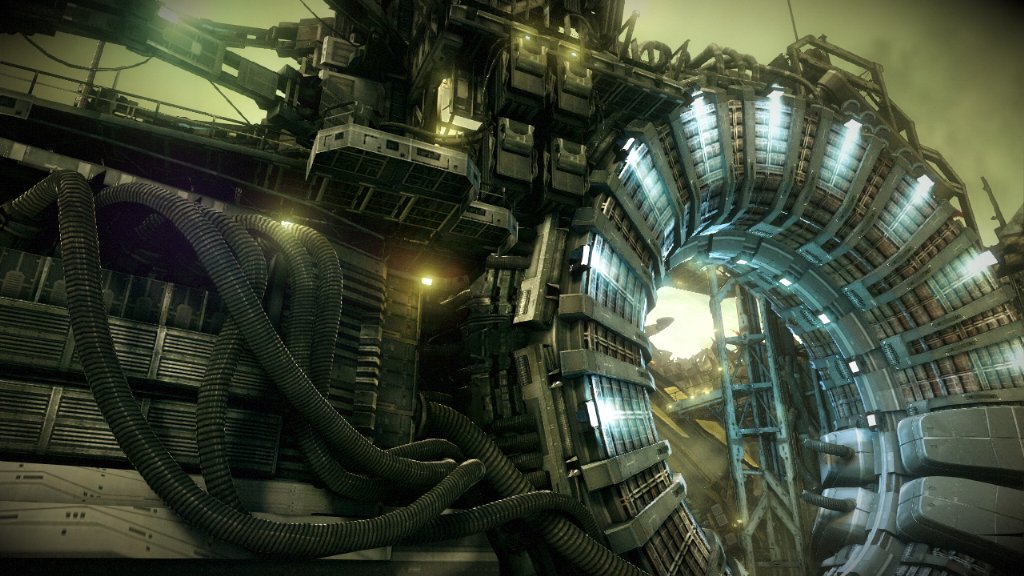Killzone 3: The Glorious Fruits of Our Land
[ED Note: this is the first of two Killzone 3 reviews we’ll be running in the next couple of days]
Spoiler warning: Major story spoilers for both Killzone 2 and Killzone 3, including the endings of both.
The standard review approach for Killzone 2, Guerilla Games’ showcase PS3-exclusive first-person shooter, focused on judging its merits in comparison to landmark Xbox 360 shooters like Call of Duty and Halo. The latter comparison was especially enticing—clash of the console-exclusive titans! Take that approach to its logical conclusion and you end up with the majority opinion about the game: graphically impressive and plenty of fun, but occasionally marred by poor design decisions like a control scheme that felt heavy and sluggish, or a by-the-numbers campaign story.
But though you didn’t read a lot about it in reviews, there was arguably a lot of attention paid to details. Let’s take that control scheme, for example; though Guerrilla tweaked the feel of running and aiming so that it felt more responsive, they never went so far as to simply copy the Call of Duty feel. They wanted a distinctive feel to their characters; they wanted you to feel the weight and momentum of carrying around a full suit of body armor and heavy weaponry in a warzone.
A lot of encounters in the single-player campaign follow the same philosophy. Instead of connecting corridors and shooting galleries in long, linear stretches, Killzone 2 often invited—nay, forced—you to bunker down in an area and defend against waves of assaults, or to push forward slowly in the face of withering fire. The last sections of the game, where you storm the Helghast Imperial Palace, remain one of the most memorable sequences I’ve played in a first-person shooter—not because of any scripted events, but because it felt like you were actually in a war, with grenades flying everywhere and squads of soldiers greedily claiming tiny pieces of cover in the hopes of finding new firing angles against the entrenched Helghast.
And then there’s the narrative, which comes off as a bit cookie-cutter but turns out to be part of a massive backstory involving Earth and its early attempts at colonization. This involves a lot of wars, a lot of dead people, and a lot of blame. But strangely, it’s the Helghast who seem to suffer the most. It’s also heavily implied in the first and last cutscenes of Killzone 2: the Helghast, having built their planet out of little more than rocks and dirt, now must defend their homeland against a warmongering ISA—which, by the way, means you’re the warmongerer. Meanwhile, as you slog through one industrial wasteland after another, you might find yourself wondering why you’re trying so hard to capture a planet that apparently has so little to offer anyone. What exactly are you fighting for, anyway? Why did your superiors so vastly underestimate the Helghast defenses? And why does everyone on your squad seem like a jerk, even if they’re not wearing Nazi-inspired uniforms like the Helghast?
On the surface, Killzone 3 looks a lot like its predecessor. It uses an improved version of the Killzone 2 engine. It’s still set on Helghast, and takes you through plenty of grey and brown war-torn battlefields. You even keep company with the most annoying squadmate from Killzone 2, Rico. But though the game remains a highly competent shooter, the spark is missing. It’s as though Guerrilla Games, after the apparently herculean effort required to produce Killzone 2, decided to scale back the ambition for the third game, assuming the hard work was over now that they had their engine.
Lest anyone gets the wrong idea, Killzone 2’s story is not exactly Oscar-caliber. In turns of plot twists, Call of Duty has it beat and then some. No one’s character really evolves, and there’s a whole lot of yelling for no apparent reason. But it did manage to avoid coming off like a Hollywood blockbuster; there isn’t a lot of walking away from giant explosions, stupid one-liners or fuck-yeah-America moments. Killzone 3 manages to last all of 13 minutes before the first stupid one-liner; before the half-hour is through, you will literally drive a car over a cliff while shouting “nooooooooooooooo!”
Your two main adversaries, in the absence of Scolar Visari, are the leaders of two Helghast fragments: Chairman Stahl, the technologist behind the armaments company fueling the Helghast war machine; and General whats-his-face, who is so obviously telegraphed as the loser in the inevitable battle of wills that I never even got around to remembering his name. A large portion of the game’s cutscenes are given over to this tense political drama, if by “tense” you mean “ridiculously overplayed and hardly believable.” The West Wing, this ain’t. On the flip side, you have the ISA, who shortly after the end of Killzone 2, decide it’s time to pull out in the face of overwhelming Helghast retaliation. Unfortunately, Sev and Rico never make it off the planet. Six months later, Rico is MIA and Sev is eating Helghan tapeworms somewhere in what passes for a jungle on the godforsaken planet.
Let’s stop for a second to consider the possibilities. Considering all the hopeless scenarios you had to face in Killzone 2, what possible way did you have to make the sequel seem even more grim while keeping up the invasion motif? The obvious answer is to have the invasion fail. But covering for a massive retreat doesn’t seem to make for a good game—unless your retreat fails. Wait, that’s it! Make Killzone 3 even darker by having your squad fight a hopeless guerilla war behind enemy lines, with no hope for reinforcements, your supplies dwindling, and your buddies getting picked off day by day. It would’ve been a great way to continue some of the motifs present in the second game, and if done right, you would’ve had the video game equivalent of, say, the Cylon occupation of New Caprica in Battlestar Galactica.
So what does Killzone 3 do instead? It skips over the entire six months you’re stranded on the planet, and picks up pretty much exactly where you left off: together again with Rico, blowing shit up without a care, and apparently forgetting that for the past six months, you all thought you were going to die of starvation or from a bullet through the head. A huge wasted opportunity, for sure. And there are others—from the lack of relevance of the Stahl coup to the story until the very end, to the final battle and a finale that one-ups the ending of the previous game by having you commit an even larger, more heinous war crime for even less of a reason, while your character seems to give even less of a fuck. If there’s one consolation in all this, it’s that you don’t have to do anything as difficult as fight Radec again. Thank goodness.
So how’s the game feel? Dualshock controls do feel a bit more responsive, though I still think the deadzone on the sticks could be reduced. And perhaps this is inherent to Killzone’s design, but I found myself struggling to find the right control scheme for quite a while—something I don’t normally worry about with most console shooters. I think it’s because the cover button screws everything up. The default controls free your left shoulder up for triggering cover, but put the ironsights on R3, so that you click the right stick to zoom, and click it again to return to normal—that takes some getting used to. The alternate controls put ironsights on L1, like you’d expect in a Call of Duty, but—crucially—it doesn’t move the cover button off L2, so you have to either keep two fingers on the left shoulder, or use your left index finger for both cover and ironsights, meaning you’ll want one of the two as a toggle instead of a hold-to-activate. Which also takes some getting used to. But this is a pretty pedantic discussion to get into, especially in comparison to the Move discussion.
I tried Killzone 3 with both the Move controller/nav controller setup and a full Move sharpshooter combo, and though I can see where they might come in handy, you’ll almost certainly need to spend a lot of time training yourself to use them to the point where you can compete in multiplayer. Guerrilla built in some helpful tools to ease you into Move play—the snap-to-target button is very handy, for example. But it’s weird that a control scheme that theoretically should offer heightened precision and accuracy would need such assists; to me, it’s a sign that Guerrilla hasn’t quite gotten the motion control FPS right either.
Multiplayer is about the same as I remember it in Killzone 2, with some exceptions. The server browser is completely gone, thus eliminating any illusion that I was playing a PC game. The experience system has also been modified so that you purchase the items and perks you want, as opposed to unlocking set items at specific XP levels—the same change Black Ops made to the Call of Duty franchise. Otherwise, you can jump into a Killzone 3 game without much trouble if you’re used to Killzone 2, unless you’re one of the hardcore players who can list off a litany of problems involving spawn camping, custom games, map design and other things I don’t have nearly enough experience to notice or care about. To me, the most unique aspect of Killzone’s multiplayer is intact: Warzone, the game mode that gives each team a set of miniature objectives they have to complete over the course of a game. Why no one’s been able to replicate the success of Warzone, I don’t know, but so far the Killzone series stands alone—one reason why I’ve played more Killzone 2 multiplayer than pretty much any other console shooter.
Killzone 3 is certainly good enough to cement Guerrilla’s position as the PS3’s equivalent of a Bungie, and it’ll keep the Killzone fanatics happy enough to wait for the inevitable fourth game. But if you’re already the type to peer at console shooters of the dudebro kind with a skeptical eye, you’ll find no relief here. And if you really enjoyed the grueling battlefield confrontations of Killzone 2, you’ll discover fewer of those and more on-rails vehicle interludes. Whether Guerrilla has enough in the tank for a revolutionary game like Killzone 2 is anyone’s guess, but even if they don’t, I think the single biggest thing Guerrilla should do to make Killzone 4 is deceptively simple: remember that the devil is in the details.
[ED Note: This review originally appeared at Wesley’s Game Diary and we’ll be following up with another take from David Doel in the next couple of days.]








[…] 3 post? What gives?" Indeed we did. We posted Wesley's take on the game earlier this week, so head on over to get a second opinion… ] Share and Enjoy: These icons link to social bookmarking sites where readers can share […]